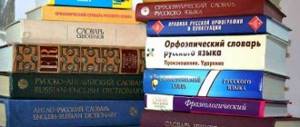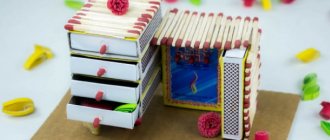lesson notes on the topic: “The world of emotions”
Guys, how do you think the story with fear ended?
How can we decorate fear?
Can we make it funny?
The psychologist leads children to understand that if they decorate fear, make it beautiful, funny, then fear will cease to be scary and everyone will become friends with it.
Children decorate their drawing.
Psychologist: Guys, look what happened to your fears? What have they become? Is it possible to be afraid of them now?
The psychologist leads children to understand that now that their fears are funny and cheerful, they have nothing to fear.
5. The third city is the city of “Wrath”.
Psychologist: “In the city, the guys meet us with broken toys and things.”
Psychologist: Oh, guys, look what happened around. You know, these guys couldn’t agree on the rules of the game and broke all the toys. How was it possible to reach an agreement?
A conversation about anger, about ways to express it (for example, I suggest tearing paper and throwing it at each other).
6. The fourth city is the city of “Sadness”. The children see in front of them an empty sandbox, which the doll Sadness has enchanted. Now no one lives in this city.
Psychologist: “I suggest you decorate this city with the help of figures and various things.”
7. The fifth city is the city of “Surprise”.
Psychologist: What was the first city? That's right, joy. Guys, now I suggest you remember what our joy looks like? Of course it is a smile. Let's draw it together using foam.
8. Return by ship. Discuss this activity with the children. What feelings did the children experience during the lesson, what do you remember most?
Analytical information
I believe that it is advisable to use this lesson, since children not only learned about the world of emotions, but also in the process of the lesson they develop communicative qualities (interaction), group cohesion, and develop motor skills.
The methodological value of the lesson lies in the fact that this lesson can be used by a teacher - psychologist, educator - to develop the personality of children.
During the group lesson, children are active and sociable. During the lesson, all possible developmental means are used (didactic material, posters, ICT). I believe that the goals and objectives set at the beginning of the lesson were achieved, the children not only learned about the world of emotions, but also learned to understand the emotional state of themselves and those around them, manage their feelings and emotions, consolidated the ability to recognize, show emotions, verbally indicate and adequately react to them. During the lesson, I try to motivate all participants in the educational process. Reflection was carried out at the beginning and at the end of the lesson, in the form of the emotional mood (state) “Journey on a ship.”
Eyes and eyebrows
You can completely change your facial expression using the pupils alone. For example, a constricted pupil will convey fear, and a dilated pupil will convey interest and sympathy:
Eyebrows also help convey emotions. The eyebrow is divided into two parts: the base and the arch, which are able to move independently of each other. They can be at rest, raised or lowered, and the character’s emotional background changes on a wide spectrum, from disappointment to wild anger:
The “reaction” of the eyebrows is visible faster, and it is felt more acutely than changes in other parts of the face and, even more so, the body. Eyebrows seem to trigger a facial chain. So, if head and body movements are not enough to convey the desired emotions, thoughtful eyebrow animation will help a lot.
For example, the character in “Ratatouille” is restrained in his movements and hardly gesticulates, but his eyebrows more than compensate for the lack of expressiveness:
Summary of a psychological lesson in the senior group of a preschool educational institution. In the world of emotions
Summary of a reinforcing psychological lesson in the senior group from the series “In the World of Emotions” on the topic: “In the Zoo”
Program objectives: • Consolidating knowledge about emotions: “joy”, “sadness”, “anger”, “fear”; • Consolidating the ability to understand the emotional states of other people, the ability to adequately express one’s emotional states; • Development of empathy, arbitrariness, imagination. Materials and equipment: Letter with pictograms, set for the game “Animal Zoo”, musical fragments for psycho-gymnastics Methodological techniques : conversation, writing stories, psycho-gymnastics, relaxation, didactic game, playing (depicting) emotional states, rituals of beginning and ending classes.
Progress of the lesson
The guys came to our lesson today; they, like you, want to learn more about the land of emotions in which we all live.
Let's start the lesson with our greeting ritual. 1. Ritual “friendship begins with a smile” Children sitting in a circle hold hands, look into the neighbor’s eyes and silently smile at each other. 2. A surprise moment - receiving a letter This morning, I found an interesting letter on the table in my office (he takes out an envelope containing a letter - 2 pictograms drawn on one sheet: sadness, joy). Do you guys recognize these emotions? And by what signs did you guess that it was them? (Children are expected to explain the signs of expressing joy and sadness) Who wants to come up with a short fairy tale (a little fairy tale) in which these emotional states would be present in that order? (Variations of children's fairy tales. If the children find it difficult or embarrassed by the guests, then the psychologist begins the fairy tale himself, involves the children in its creation through leading questions and unfinished sentences. At this stage of the lesson, it is important to listen to all versions of the fairy tales.)
3. Then the psychologist offers his own version: “It was a day off. Mitya was sitting at home. He drew a picture for mom, made a car out of a construction set for dad, but they were busy and didn’t even look at Mitya’s gifts. Mitya became sad. After some time, the parents finished work, looked at Mitya’s gifts and were very happy. Suddenly my mother says: “Shouldn’t we go to the zoo today?” Mitya was very happy.” And in the zoo there are many different animals, but not all of them woke up cheerful and cheerful today, now we will find out what mood our animals are in. 4. Game “Zoo of Moods” Purpose: to consolidate the emotional manifestations already studied (joy, sadness, anger, rage) by relating them to the various emotional manifestations of animals on picture cards. The presenter shows the children a card with an emotional state and asks them to find an animal with the same emotional state on their card and name it (cheerful tiger cub, angry hippopotamus, etc.). 5. Psycho-gymnastics “Zoo” One, two, turn around and turn into a lion! One, two, turn around and turn into a squirrel! One, two, turn around, turn into an elephant! One, two, turn around, turn into a nightingale! 6. Game “Such different animals” Children stand in a circle and depict animals in the state that the presenter says: - cowardly bunny - angry bear - sad elephant - funny monkeys - angry wolf - calm owl 7. Mini relaxation “Sunny Bunny” Imagine imagine that a sunbeam looked into our eyes. Close them. The bunny ran further over his face, gently stroke him with your palms: on his forehead... on his nose... on his mouth... on his cheeks... on his chin... stroke him carefully so as not to scare him away. Head... tummy... arms... legs. He climbed up the collar - pet him there too. The sunny bunny is not a mischievous person - he loves and caresses you, and you pet him and make friends with him. The sunbeam made friends with all the animals. Their mood became calm and friendly. We will remember this mood and go to the group with it. 8. Ritual for ending the lesson “Friendship Knot” Children place their palms in a circle so that they get a strong handshake that no one can unclench.
We recommend watching:
Summary of the final psychological lesson in the preparatory group Summary of the psychological lesson with children of the preparatory group Lesson of a teacher-psychologist with children of the preparatory group Summary of the lesson with a psychologist in kindergarten in the senior group
Similar articles:
Summary of a lesson on emotional development in the senior group





